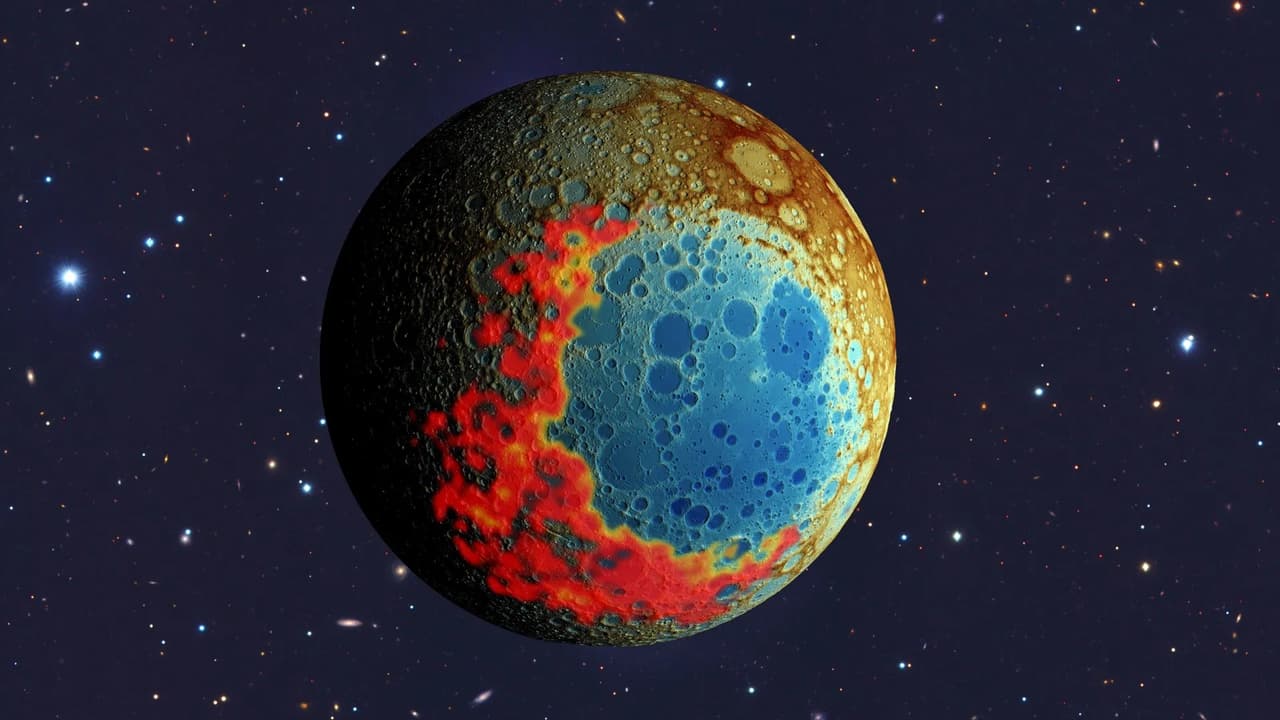A study reveals that a massive asteroid struck the Moon from the north 4 billion years ago, forming the South Pole-Aitken Basin and exposing deep lunar layers that shaped its volcanic history. Artemis astronauts may soon uncover its secrets.
When NASA’s Artemis astronauts touch down near the Moon’s south pole, they’ll be landing in a place that holds one of the most dramatic stories in the solar system — the aftermath of a colossal asteroid strike that reshaped the Moon’s surface over 4 billion years ago.
A Northern Strike That Changed Everything
A new study led by Jeffrey Andrews-Hanna, a planetary scientist at the University of Arizona, suggests that a massive asteroid slammed into the Moon from the north, carving out the South Pole–Aitken Basin (SPA) — one of the largest and oldest impact craters in the solar system. The research, published in Nature, rewrites decades of assumptions about how the Moon’s southern terrain formed.
Spanning about 1,200 miles across, the SPA basin was long believed to have formed from a southern impact. But the basin’s teardrop shape told another story. Andrews-Hanna’s team found that the crater narrows toward the south, meaning the asteroid struck from the north at a glancing angle, spreading debris deep into the southern region.
“This means Artemis astronauts will land right on the down-range rim — the best place to find material blasted from deep within the Moon’s interior,” Andrews-Hanna said.
Unlocking Clues to Lunar Volcanism
The team compared the Moon’s topography, crustal thickness, and surface chemistry to similar impacts elsewhere in the solar system. Their findings revealed that the SPA basin’s ejecta — the blanket of material thrown up by the impact — contains KREEP elements: potassium, rare earth elements, and phosphorus. These heat-producing materials are concentrated mostly on the Moon’s near side, which could explain why it has vast volcanic plains while the far side remains rugged and cold.
Andrews-Hanna likens the Moon’s early molten state to a “cosmic soda can.” “As the Moon’s magma ocean cooled, lighter materials floated to form the crust, while heavier elements sank,” he said. “The last bits of liquid — rich in KREEP — got squeezed toward the near side, fueling volcanic activity.”
A Window into the Moon’s Deep Past
The new model also helps explain why the Moon’s crust is much thicker on the far side. As the crust solidified unevenly, the remaining molten material may have been forced toward the near side “like toothpaste being squeezed from a tube,” Andrews-Hanna said.
This uneven layering left behind radioactive materials that are now detectable in the SPA basin — especially thorium, a telltale sign of KREEP-rich rock.
Artemis: The Next Chapter
When Artemis astronauts collect samples from the south pole, scientists believe they’ll be retrieving material that originated deep below the lunar surface — possibly from the Moon’s original magma ocean. These ancient rocks could offer the clearest picture yet of how the Moon formed and evolved.
“With Artemis, we’ll finally hold these clues in our hands,” Andrews-Hanna said. “Each sample could reveal another page in the Moon’s 4-billion-year-old story.”
